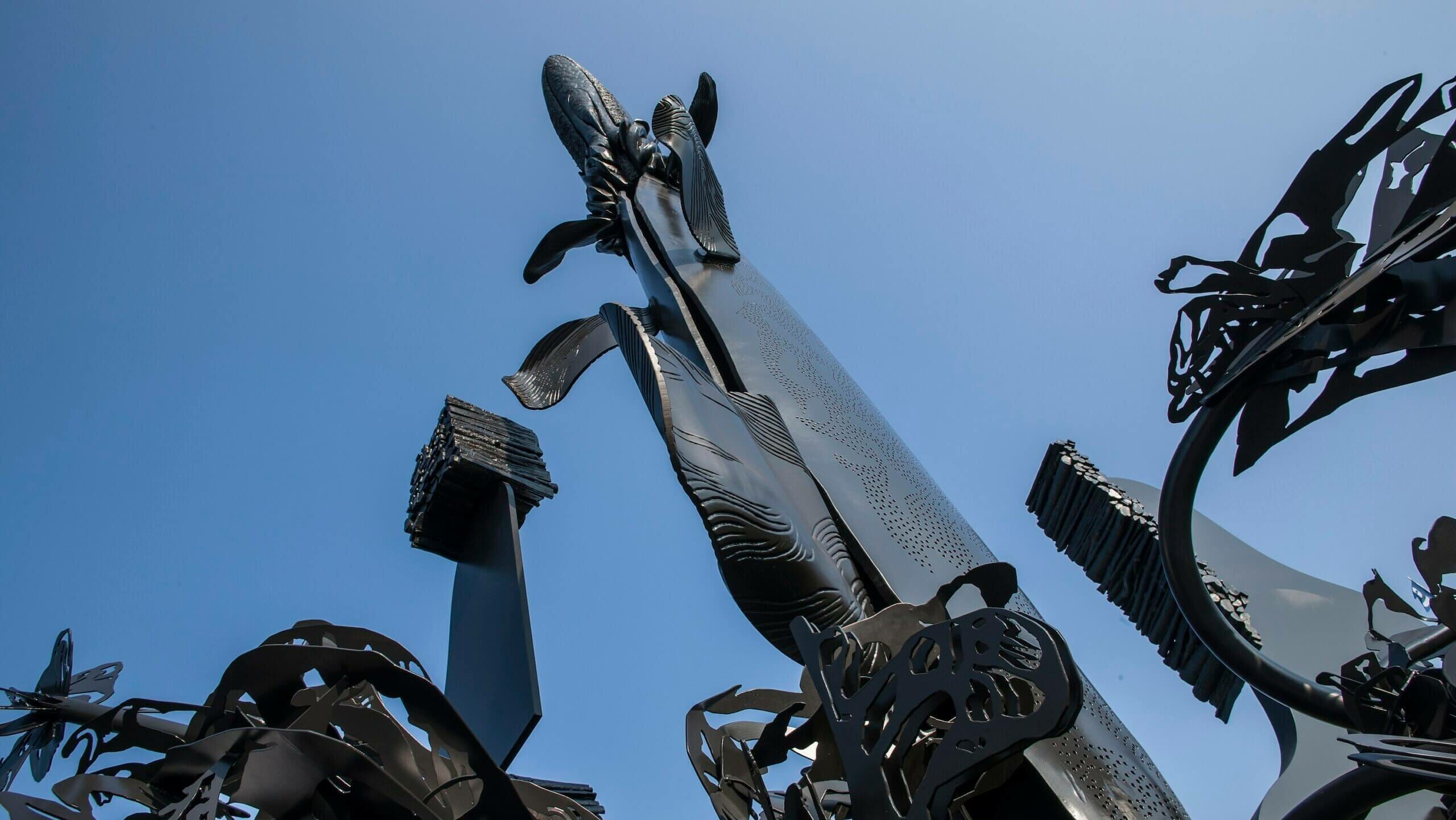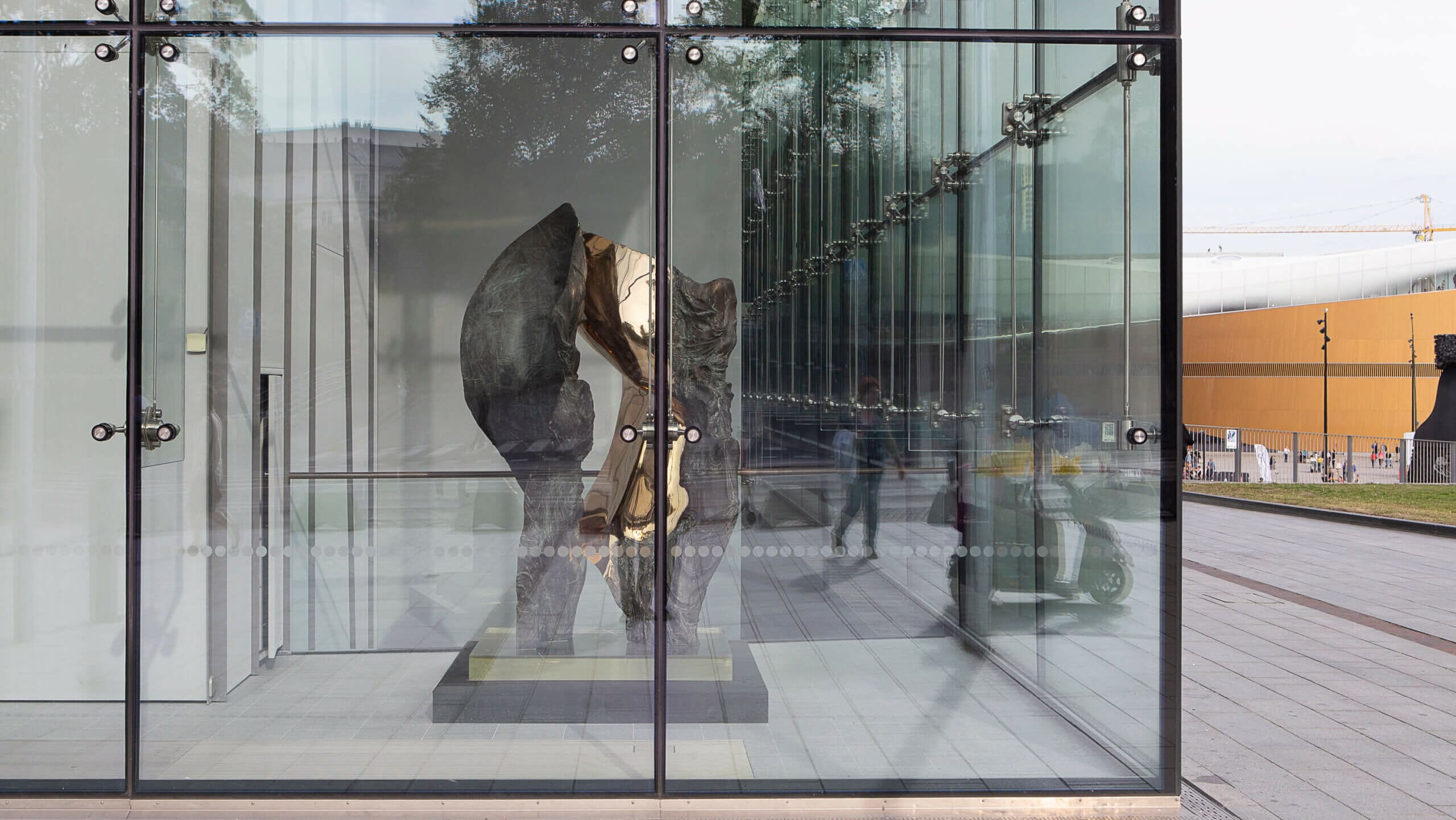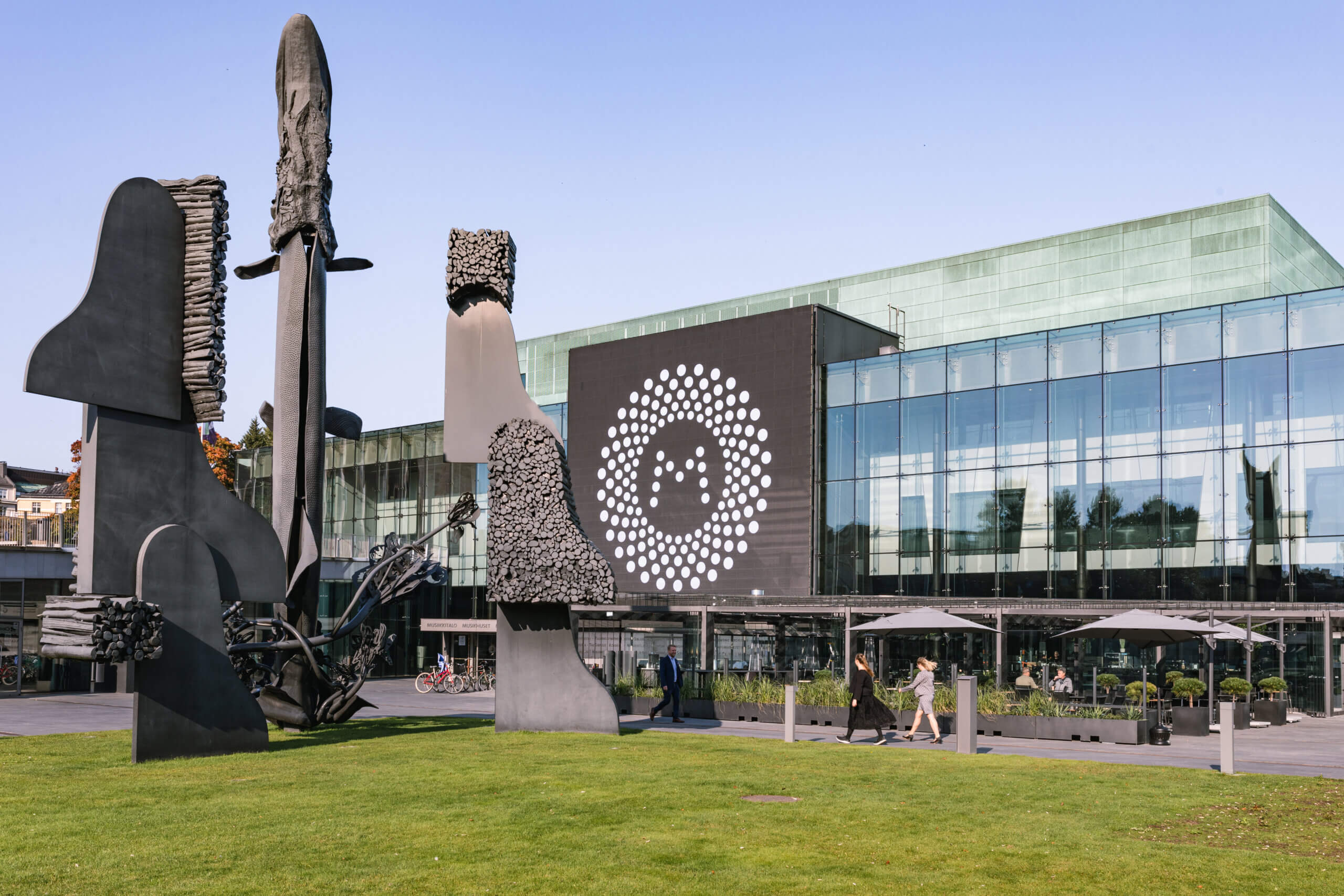Alongside music and architecture, you will also be able to enjoy visual art on your visit to Musiikkitalo. Reijo Hukkanen’s Song Trees and Kirsi Kaulanen’s Gaia were both specifically commissioned for this building. Works from the Finnish State Art Deposit collection are also on display here, including Antti Immonen’s Black Smoker at the Sibelius Academy entrance and Laila Pullinen’s Spring Within which can be found indoors at the corner of Mannerheimintie and Kansalaistori Square.

Kirsi Kaulanen
Gaia
A monumental hanging sculpture, Gaia is displayed suspended from the Musiikkitalo ceiling. Named after the ancient Greek earth goddess, it is a tribute to the natural world and life itself. In addition to its organic shapes, this artwork powerfully forges a connection with nature by featuring 28 of the 150 plant species currently at risk of extinction in Finland. The sculpture can be viewed and interpreted from many different vantage points, variously taking on the appearance of a horn, saxophone, landscape or an abstract winding shape.

Reijo Hukkanen
Song Trees
Song Trees are a totem for everyone, whether they’re just passing by or actually visiting Musiikkitalo. Featuring a series of highly recognisable visual elements, this playful work is guaranteed to catch your attention but also offers plenty of opportunities for personal reflection and interpretation. The familiar features – a grand piano lid, a log pile and a fish head – resonate with the urban landscape surrounding the Music Centre and the wider Töölönlahti Bay. Lighter than its shadow, the sculpture blends effortlessly into its setting, continuing to influence people’s experience of it whether they are actively stopping to take it in or not. Song Trees is inspired by The Pike’s Song (1928), a poem by Finnish writer Aaro Hellaakoski (1893–1952).

State Art Deposit Collection
In addition to the sculptures by Reijo Hukkanen and Kirsi Kaulanen that were commissioned for Musiikkitalo, further artworks from the State Art Deposit Collection have also been placed on display here. At the Sibelius Academy entrance, visitors are greeted by Antti Immonen’s Black Smoker, while those passing along Mannerheimintie will be treated to Laila Pullinen’s Spring Within. Further works by Kirsi Kivivirta, Kari Soinio, Susanne Gottberg and Maiju Salmenkivi are also to be found here.

The Consuctor's Batons
Tahtipuikkotaulu
Tahtipuikkotaulu (The Conductor’s Batons), an artwork auctioned in December 2014 to raise funds for the New Children’s Hospital 2017 initiative, is now on permanent display at the Musiikkitalo foyer. The artwork was acquired by the Tiina and Antti Herlin Foundation and raised EUR 41,000 for Helsinki’s New Children’s Hospital.
This unusual display comprises 12 batons, donated by Finland’s best-known and most well-loved conductors; Atso Almila, current professor of conducting and orchestral training at the Sibelius Academy and his predecessors Professor Emeritus Jorma Paunula and Professor Emeritus Leif Segerstam along with Okko Kamu, Esa-Pekka Salonen, Jukka-Pekka Saraste, Sakari Oramo, Osmo Vänskä, John Storgårds, Mikko Franck, Susanna Mälkki and Hannu Lintu. It is the work of graphic designer Antti Hannuniemi, who donated his time and expertise to complete the project. The materials were donated by Muotoplate Oy, ArtWay and Oy Werner Ab.
About Musiikkitalo

Our history
Musiikkitalo is the result of a joint endeavour by the Sibelius Academy, the Finnish Radio Symphony Orchestra and Helsinki Philharmonic Orchestra. First opened to the public in August 2011, the building enjoys a prime location in central Helsinki, opposite Eduskunta, the Finnish Parliament.

Our resident organisations
The resident organisations at Musiikkitalo are: the Helsinki Philharmonic Orchestra, the Finnish Radio Symphony Orchestra and the University of the Arts Helsinki’s Sibelius Academy.

Musiikkitalo concert organ
January 2024 saw the unveiling of Musiikkitalo’s long-awaited new concert organ. The 124-stop organ has the distinction of being the largest modern concert hall organ in the world. It is also one of only two instruments of this kind that can also be considered works of art in their own right. The creation of the new organ was made possible through a significant donation from the composer Kaija Saariaho.

Our architecture
At Musiikkitalo, our walls speak softly to lend focus to what really matters here; the music. The architects have created a venue that is designed to encourage openness and the exchanging of ideas.
